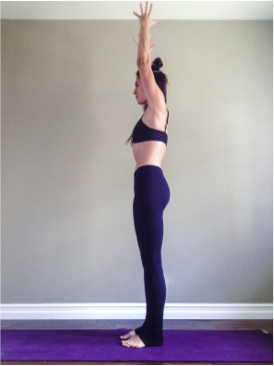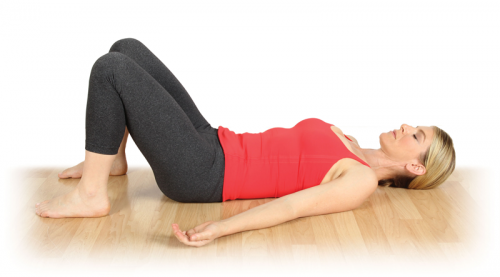“Go inside,” the Iyengar teacher at my home studio likes to say. This is where we check our business without worrying about how the shape we’re in looks, but rather how it feels.
When I started teaching yoga, I took cues from all over the place, including the mobility/recovery, and CrossFit world. I wanted to help my students achieve more functional shapes and not just imitate the shape I was making. After all, my body comes with its own set of problems.
There is a common concept of test and re-test in mobility work, where you make a shape, mobilize the area in some way, then make the shape again. The shape (or “archetype” if you’re Mobility WOD savvy) is an important diagnostic and coaching tool if you’re attempting a specific movement with that shape…say squatting down, then standing up with weight on your back (back squat).
I like to apply similar principles with yoga asana. Take shoulder flexion, for example. This is the anatomical term for putting your arm over your head, palm facing in, as in Tadasana with arms overhead.
What might the angle of the arm overhead tell you about the restrictions you have in making this shape? Looking from the inside, where do you feel tight? How freely can you breathe with your arms overhead? Are you arching your back to straighten your arms? Then, after mobilizing the shoulder joint, even something simple like controlled articular rotation, or some sun salutations if that’s your jam, how does it feel to return to that shape?
In Yoga Tune Up, we seek to map out areas of restriction as well as areas of release. We refer to mapping of our internal landscape as our EmbodyMap. Checking in (test) and re-checking (re-test) allows a practitioner to work on this understanding.
Another common shape to help you check in might include Ardha Savasana (half corpse). Here you may notice your breath. How well does your ribcage expand into the ground? Can you relax with your neck long, back of the head on the mat? Do shoulders allow your arms to easily turn out, face up? This shape is simple to use at the beginning or end of a practice, or after any work that involves the chest, ribcage, thoracic spine, or abdomen, as it is generally a simple shape to breathe in.
You can gain all kinds of information by looking at your squat (Malasana). The ankle, knee, and hip joints are areas of common and obvious restriction. Note how your shins and feet feel. What is your low back doing? Can you maintain a neutral spine? What does it feel like to put your arms overhead? I like to check in with Malasana throughout a practice. As we progress, we might work on ankle mobility, then check back in. Next, we may move on to the hip capsule in shape like lizard, and check in again. By the end of the practice, this shape may look and/or feel totally different than when we started.
“Go inside,” I tell my students, whether they’re CrossFitters at my gym (box, if you’re savvy), or yogis at the studio. Take the time to check in, then once you’ve done the work, take the time to check again. You might just surprise yourself.
I’m Tiffany…technical writer by day, Yoga Tune Up teacher by night. I really enjoy helping people learn how to move better and understand how they are put together. You can find me in the great state of Indiana, frightening my students at Studio Seva Yoga or CrossFit Fort Wayne. Midwest is best!
 Yaspan Tech, Computers, Gadgets, Reviews, News and Analysis
Yaspan Tech, Computers, Gadgets, Reviews, News and Analysis







